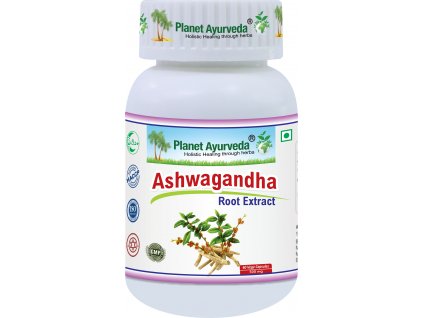Adenomyosis
Adenomyosis - a modern and Ayurvedic view of treatment
Adenomyosis, or internal endometriosis, is a condition that affects many women and is characterized by ingrowth of tissue from the uterine mucosa into the muscular wall of the uterus. The most common symptoms include heavy menstruation pain, heavy bleeding during menstruation, pelvic pain and infertility. This condition can have a significant impact on a woman's quality of life, and it is important to properly diagnose and treat it.
Causes of origin
The causes can be multiple and include hormonal imbalances, genetic factors and inflammatory processes in the uterus. According to modern medicine, an increased level of estrogen is one of the main factors contributing to the development of this disease.
From the point of view of Ayurveda, adenomyosis is the result of tridosha (vata, pitta, kapha) imbalance in the body. An imbalance of the vata dosha can lead to the accumulation of toxins and inflammation, while an imbalance of the kapha dosha can cause stagnation and mucus production. In the treatment of adenomyosis, herbal extracts are often used, which can help balance the imbalance in the body and relieve the symptoms of the disease.
Recommended herbs
In the treatment of adenomyosis, herbal extracts are often used, which can help balance imbalances in the body and alleviate the symptoms of the disease. The most effective herbs include:
-
Ashwagandha (Withania somnifera): This herb is known for its adaptogenic properties, meaning it can help the body adapt to stress and cope with hormonal imbalances. In addition, ashwagandha also has anti-inflammatory effects and can help reduce the inflammatory processes in the uterus caused by adenomyosis.
-
Shatavari (Asparagus racemosus): This herb is traditionally used to support the female reproductive system and hormonal balance. It has a calming effect on the body and can help relieve the painful symptoms associated with adenomyosis. In addition, Shatavari also has anti-inflammatory properties that can help reduce inflammation in the uterus.
-
Gokshura (Tribulus terrestris): This herb is known for its diuretic and anti-inflammatory effects. It helps to detoxify the body and supports the health of the reproductive system. For adenomyosis, Gokshura can help reduce inflammation in the uterus and reduce the symptoms associated with this condition.
-
Lodhra (Symplocos racemosa): This herb has astringent and anti-inflammatory properties, which means it can help reduce inflammation and bleeding associated with adenomyosis. In addition, it supports the healthy function of the reproductive system and can help balance hormonal activity.
-
Triphala: Consisting of Amalaki (Emblica officinalis), Bibhitaki (Terminalia bellirica) and Haritaki (Terminalia chebula), this complex herbal blend is known for its antioxidant, detoxifying and balancing effects. Triphala can promote healthy digestion, detoxify the body, and improve the function of the reproductive system.
These herbs are widely used in Ayurvedic practices to support women's health. Their anti-inflammatory, antioxidant and balancing effects can help alleviate the symptoms associated with this disease and support the overall health of the reproductive system.
A suitable combination designed by Dr. by Vikram Chauhan (Female Health 1 capsule 2x a day, Eve plus, 1 capsule 2x a day, Boswellia Curcumin  ; 1 capsule 2x a day)
Suitable diet and lifestyle
In addition to using herbal extracts, it is also important to follow a balanced diet and a lifestyle that supports the harmonious functioning of the body. According to Ayurvedic principles, it is important to minimize the consumption of foods that increase estrogen levels, such as dairy products and fatty foods, and prefer fresh fruits, vegetables and herbal teas. It is equally important to ensure sufficient rest, a regular exercise regime and stress management using techniques such as yoga, meditation or deep breathing.
Adenomyosis can be a challenging condition, but with appropriate treatment and support from Ayurvedic herbs and lifestyle, symptoms can be alleviated and the quality of life for affected women can be improved.















